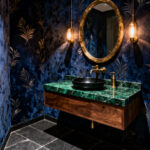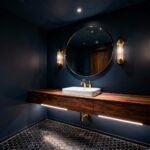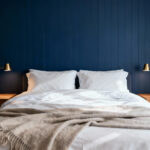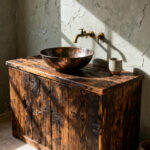Creating a bedroom that serves as both a restful sanctuary and a stunning showcase of your personal style requires more than just picking beautiful pieces. Your bedroom furniture design choices impact everything from your sleep quality to your daily mood, making thoughtful planning essential for crafting a space that truly works for your lifestyle.
The challenge lies in balancing aesthetics with functionality while maximizing every square inch of your space. Whether you’re working with a cozy apartment bedroom or a spacious master suite, the right furniture placement, storage solutions, and design elements can transform even the most ordinary room into an extraordinary retreat. From strategic bed positioning to clever storage hacks, each decision builds upon the next to create a cohesive, calming environment that reflects your unique personality.
These 18 essential bedroom furniture design tips will guide you through every aspect of creating your dream space, offering practical solutions and creative inspiration to help you design a bedroom that’s both beautiful and brilliantly functional.
1. Measure Your Bedroom Accurately Before Buying Furniture
Accurate measurements form the foundation of successful bedroom furniture design, preventing costly mistakes and ensuring every piece fits perfectly within your space. This crucial first step goes beyond simply measuring room dimensions – it involves understanding traffic flow, door clearances, and the spatial relationships between different furniture pieces.
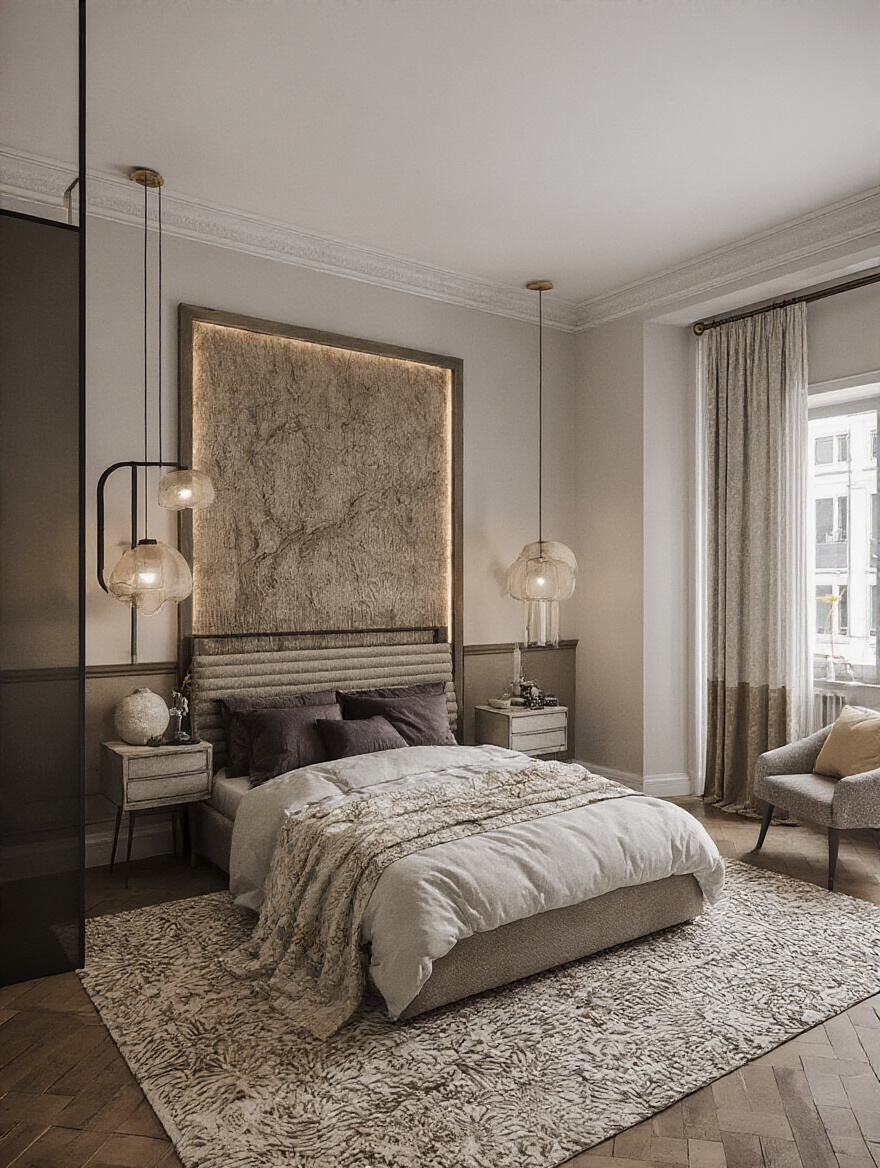
Professional designers emphasize that roughly 20% of furniture returns stem from sizing issues, often resulting in restocking fees and delivery complications. When you measure precisely, you’re not just avoiding these headaches – you’re optimizing your room’s functionality and visual appeal. Consider factors like drawer clearance, door swings, and the space needed to comfortably walk around your bed.
- Essential measurements to record: Room length, width, and ceiling height
- Clearance requirements: Doorways, hallways, and stairwells for delivery
- Functional spacing: 30-36 inches around the bed for comfortable movement
- Outlet locations: Plan furniture placement around electrical needs
The magic of this technique reveals itself when you use painter’s tape to outline furniture footprints on your floor. Sarah, a client in a compact city apartment, discovered through this method that rotating her bed 90 degrees would free up enough space for a reading chair – a game-changing realization that transformed her cramped bedroom into a multi-functional retreat.
2. Choose a Cohesive Style for Harmonious Bedroom Decor
Beyond the logistics of measurement, the designer’s secret here is to establish a unified aesthetic vision that guides every furniture selection. A cohesive style in bedroom furniture design creates visual harmony, reduces decision fatigue, and ensures your space feels intentionally curated rather than randomly assembled.
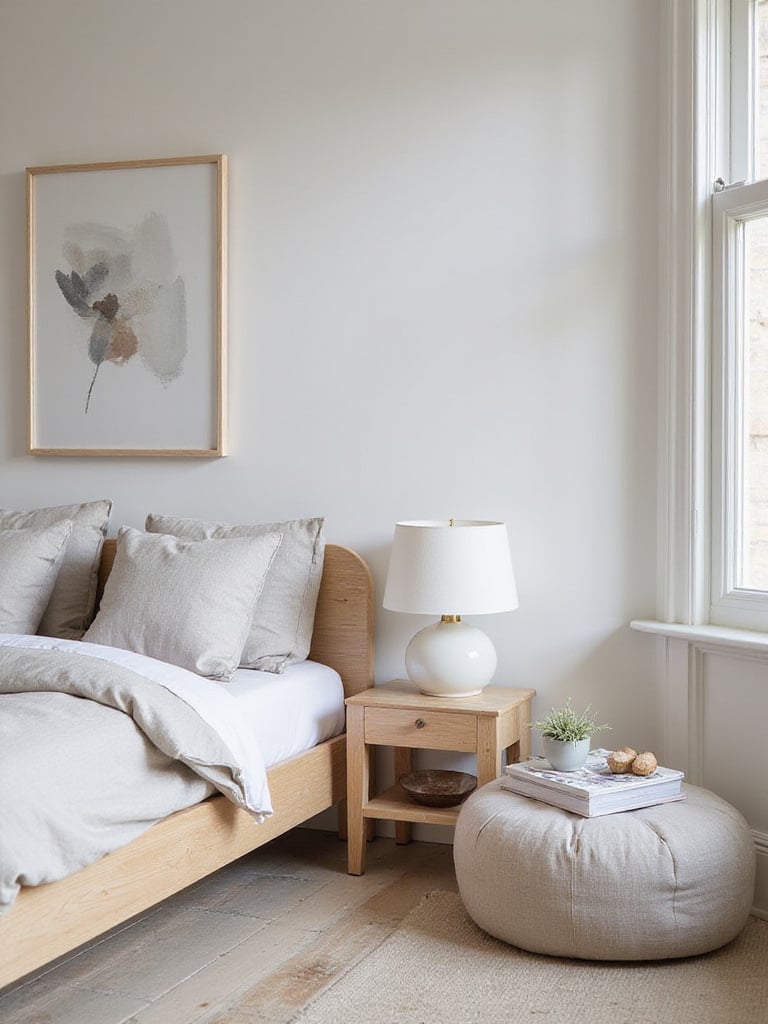
Environmental psychology research shows that visually coherent spaces reduce stress and promote better sleep quality. When your bedroom tells a consistent story through coordinated materials, colors, and forms, your mind can truly relax. This doesn’t mean everything must match perfectly – instead, think of creating a conversation between pieces that share common design DNA.
Start by identifying 1-2 core design styles that resonate with your personality and lifestyle. Create a mood board featuring furniture pieces, color palettes, and textures that embody your chosen aesthetic. A client seeking tranquility chose Japandi style, combining a low-profile oak bed with natural linen bedding and minimal ceramic accessories. The result was a serene sanctuary where every element supported the overall sense of calm.
3. Optimize Bed Placement for Ideal Room Flow and Comfort
What makes this design special is the way your bed’s position influences the entire room’s energy and functionality. In bedroom furniture design, the bed serves as the anchor point that determines traffic patterns, visual balance, and even sleep quality through its relationship to doors, windows, and other furniture pieces.

The commanding position principle suggests placing your bed where you can see the room’s entrance without being directly aligned with the door. This positioning promotes feelings of security and control while ensuring optimal room flow. Additionally, consider natural light patterns, avoiding direct sunlight that might disrupt sleep while maximizing the room’s overall brightness during daytime hours.
- Ideal placement: Against the longest solid wall when possible
- Traffic flow: Maintain clear pathways on at least three sides
- Visual balance: Position to create symmetrical furniture arrangements
- Practical access: Ensure proximity to electrical outlets for bedside lighting
In a 10×12 bedroom, positioning a queen bed against the longer wall rather than centering it in the room created space for both nightstands and a dresser while maintaining comfortable walking areas. This strategic placement increased the room’s functional square footage by nearly 25%.
4. Select the Perfect Bed Frame to Anchor Your Design
The craftsmanship reveals itself in details like how your bed frame choice establishes the entire room’s character and functionality. As the largest furniture piece in bedroom furniture design, your bed frame influences everything from storage capacity to visual weight distribution, making this selection crucial for both aesthetics and practicality.
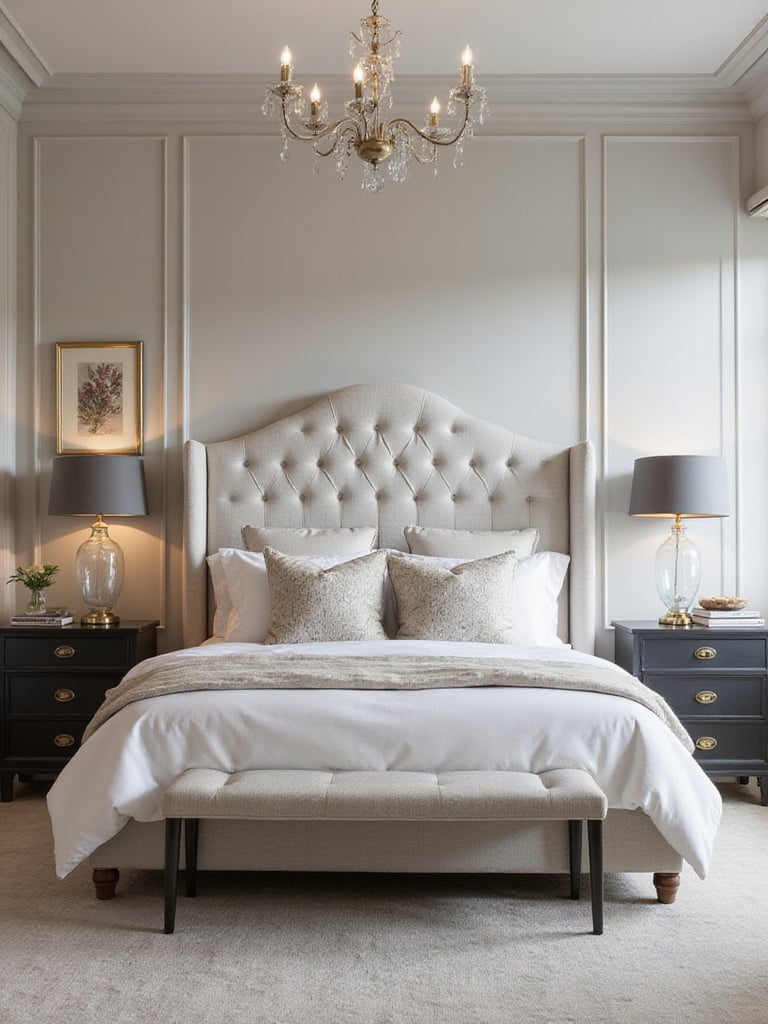
Consider how different frame styles serve various needs: platform beds maximize floor space and provide built-in storage, while traditional frames with headboards create focal points and support pillows for reading. The material choice – whether warm wood, sleek metal, or luxurious upholstery – sets the tone for your entire color palette and texture scheme.
Storage beds with integrated drawers can eliminate the need for a separate dresser in smaller spaces, while low-profile frames make rooms with lower ceilings feel more spacious. A client in a studio apartment chose a platform bed with six built-in drawers, consolidating all clothing storage and freeing up 25 square feet for a workspace area.
5. Determine Optimal Mattress Size for Space and Sleep Quality
Unlike mass-produced alternatives, this technique allows you to balance comfort needs with spatial constraints in bedroom furniture design. Your mattress size affects not only sleep quality but also room functionality, furniture placement options, and overall spatial harmony.

Sleep specialists recommend that couples consider upgrading to a King size when space allows, as the additional width can reduce sleep disturbances by up to 40%. However, in smaller bedrooms, a Queen or Full size might be more appropriate to maintain adequate walking space and room for other essential furniture pieces.
Before committing to a size, use painter’s tape to outline the mattress dimensions on your floor, including the bed frame’s footprint. This visualization helps you understand the remaining space for nightstands, dressers, and movement. A couple in a 10×10 bedroom chose a Full XL over a Queen, allowing them to include a small desk and maintain 28-inch walking paths around the bed.
6. Incorporate Smart Storage Solutions for Clutter-Free Living
The visual weight balances perfectly when you integrate storage solutions that serve multiple purposes in bedroom furniture design. Smart storage goes beyond simple organization – it’s about creating systems that maintain your room’s aesthetic while accommodating all your belongings efficiently and accessibly.
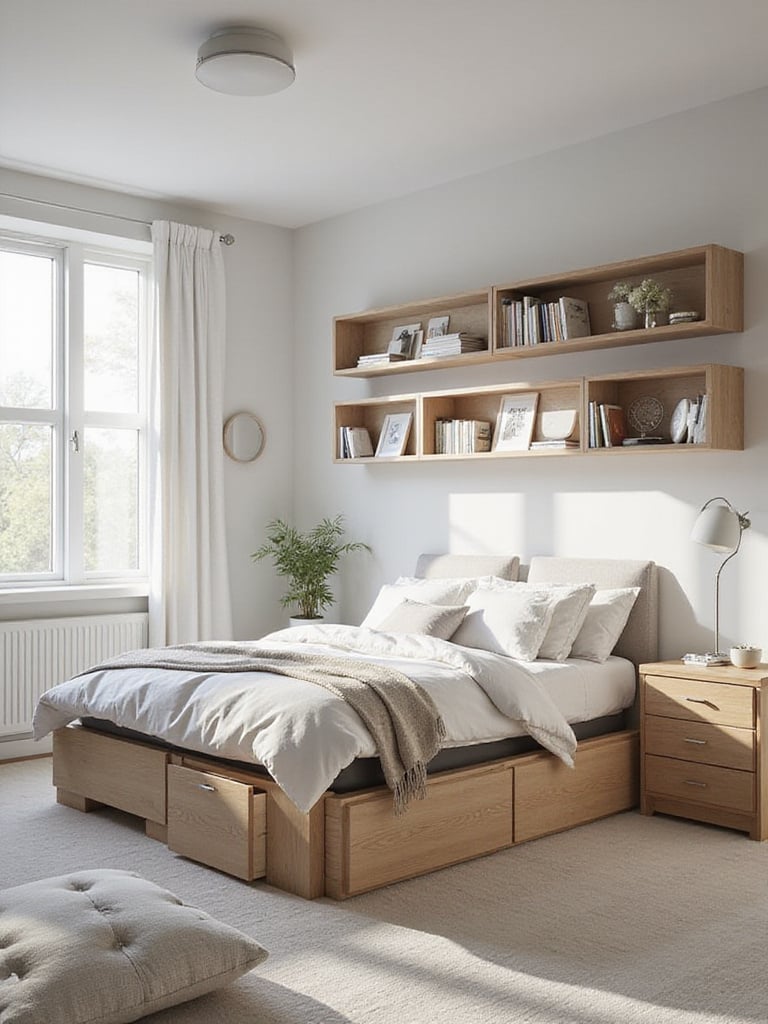
Modern bedroom storage solutions can increase your room’s functional capacity by up to 70% without adding visual clutter. Consider vertical storage, under-bed options, and furniture pieces that serve dual purposes. The key is selecting storage that complements your design style while addressing your specific organizational needs.
- Vertical solutions: Wall-mounted shelves and tall, narrow dressers
- Hidden storage: Ottoman benches and beds with lift-up mechanisms
- Multi-functional pieces: Nightstands with drawers and built-in charging stations
- Seasonal rotation: Accessible storage for items used less frequently
A client transformed their bedroom by installing a platform bed with built-in drawers and replacing traditional nightstands with wall-mounted versions featuring hidden storage compartments. This approach freed up floor space while doubling their storage capacity, creating a serene, uncluttered environment.
7. Elevate Nightstand Functionality with Strategic Selection
The unexpected pairing that always works is choosing nightstands that serve multiple functions in bedroom furniture design. These bedside companions should provide storage, display space, and convenient access to essentials while maintaining visual balance with your bed and overall room proportions.
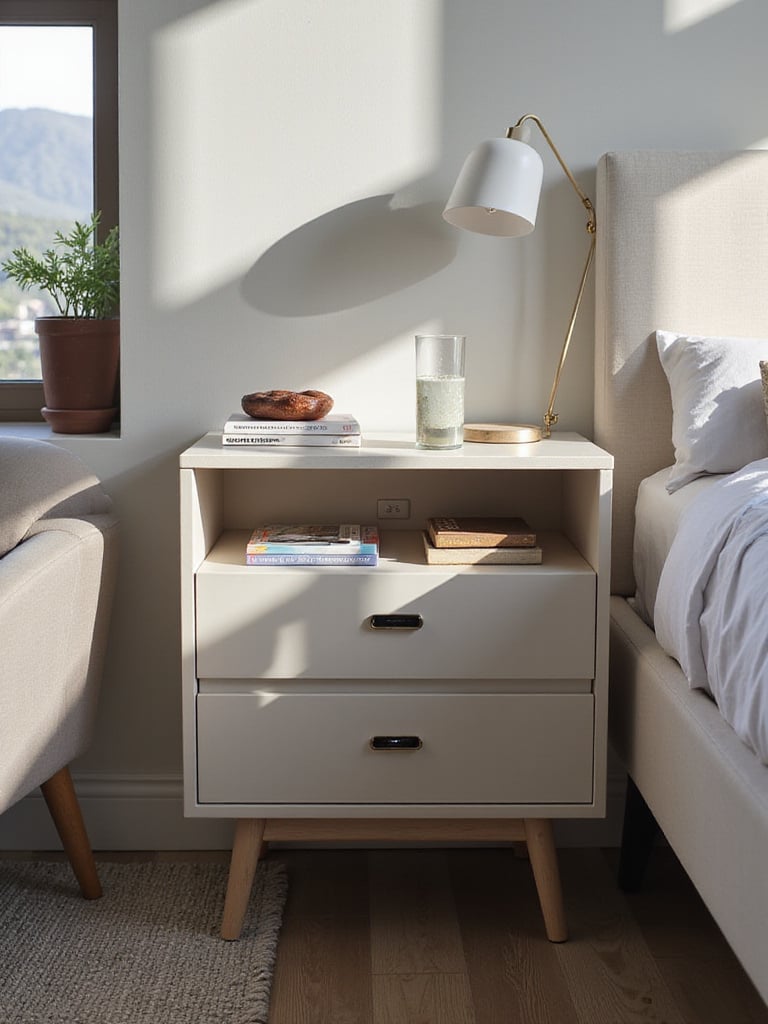
Consider your nighttime and morning routines when selecting nightstands. Do you need drawer storage for personal items, open shelving for books, or built-in charging stations for devices? The height should align with your mattress top for comfortable reach, while the width should feel proportionate to your bed size.
Wall-mounted floating nightstands work beautifully in smaller spaces, creating the illusion of more floor area while providing essential bedside storage. A couple in a compact apartment chose floating nightstands with integrated LED lighting, eliminating the need for table lamps while creating a modern, streamlined look that made their small bedroom feel significantly larger.
8. Choose a Dresser Size and Style for Ample Storage
The challenge of awkward spaces becomes easier when you select dressers that maximize storage while complementing your bedroom furniture design. Your dresser choice should balance your clothing storage needs with your room’s proportions and traffic flow requirements.
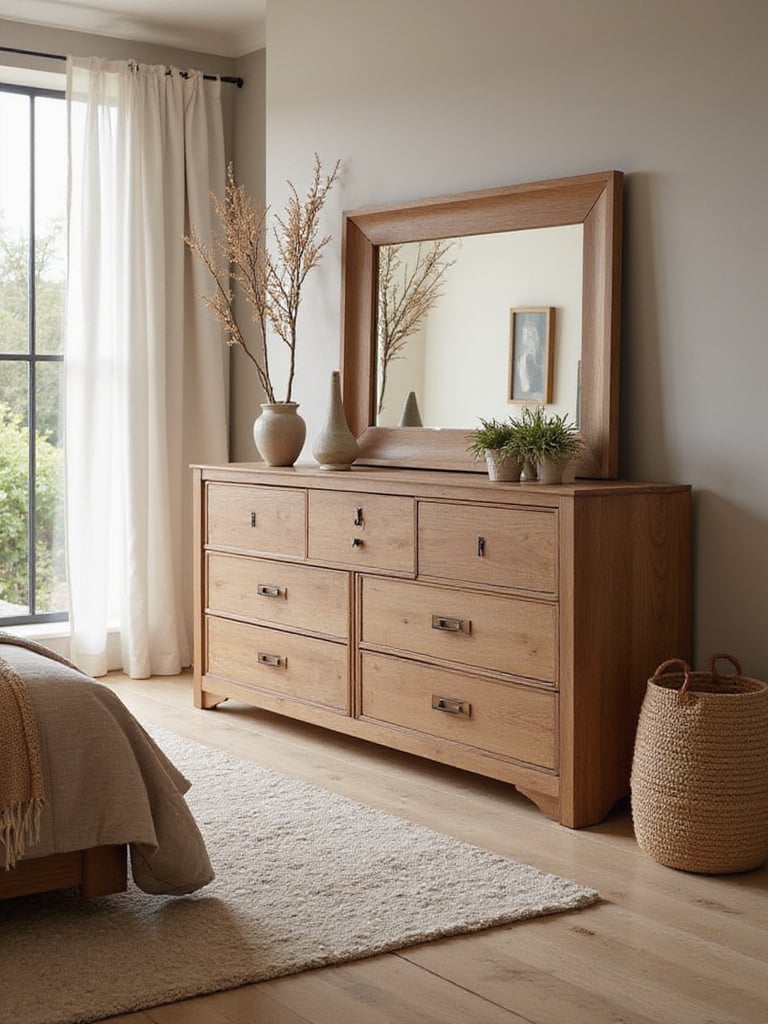
Horizontal dressers work well in rooms with ample wall space, while vertical chest-of-drawers styles suit smaller rooms or narrow wall areas. Consider the drawer configuration – fewer, deeper drawers often provide more usable storage than many shallow ones, especially for bulky items like sweaters and jeans.
- Horizontal dressers: Ideal for wider walls and larger rooms
- Vertical chests: Perfect for narrow spaces and smaller bedrooms
- Drawer organization: Use dividers to maximize storage efficiency
- Surface styling: Plan for decorative display space on top
In a 600-square-foot apartment, choosing two tall, narrow dressers instead of one wide piece saved 10 square feet of floor space while providing equivalent storage. This configuration also created better traffic flow and allowed for more flexible furniture arrangements.
9. Create a Cozy Seating Nook for Relaxation and Reading
Beyond the obvious placement, consider using this for creating a dedicated relaxation zone within your bedroom furniture design. A seating area transforms your bedroom from a single-purpose sleep space into a multi-functional retreat where you can unwind, read, or enjoy quiet contemplation.
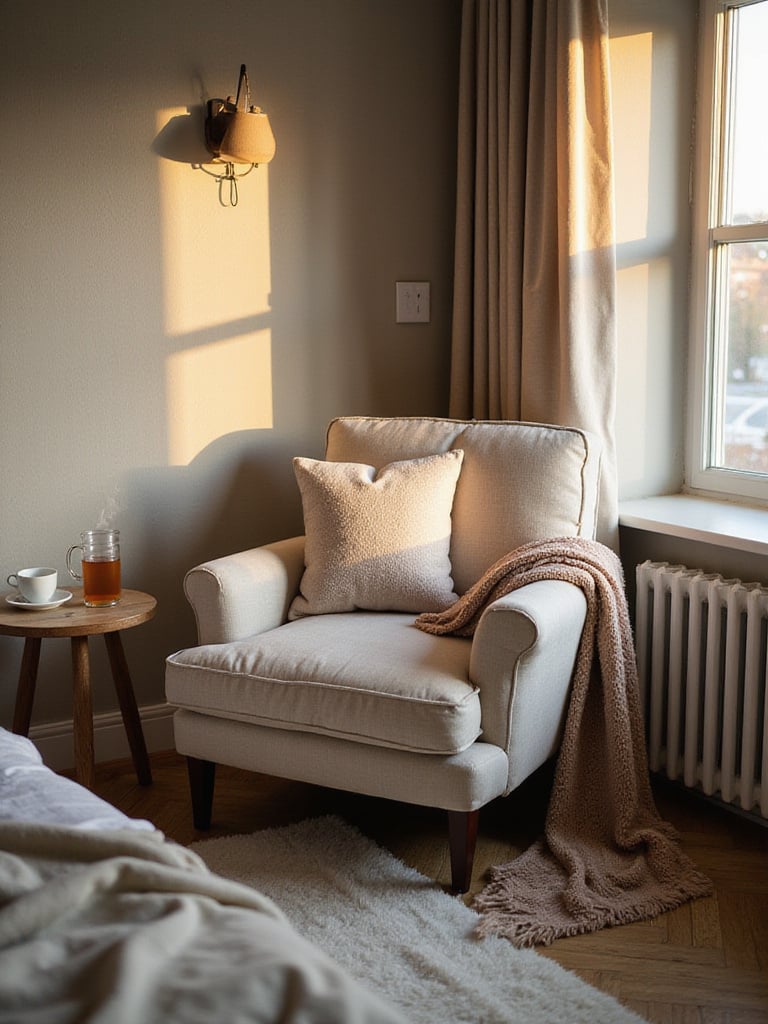
Even in smaller bedrooms, creative seating solutions can work wonders. A window seat with built-in storage, a comfortable reading chair in a corner, or even a bench at the foot of your bed can provide that essential space for activities beyond sleeping. The key is choosing seating that complements your room’s scale and style.
A homeowner with a deep window sill created an unexpected reading nook by adding a custom cushion, throw pillows, and a narrow floating shelf for books. A wall-mounted swing-arm lamp completed the setup, creating a functional and beautiful spot that maximized the room’s potential without consuming valuable floor space.
10. Integrate a Functional Desk or Vanity for Productivity
The composition comes together when you incorporate a dedicated workspace or beauty station into your bedroom furniture design. This integration addresses the modern need for flexible living spaces while maintaining the bedroom’s primary function as a restful retreat.
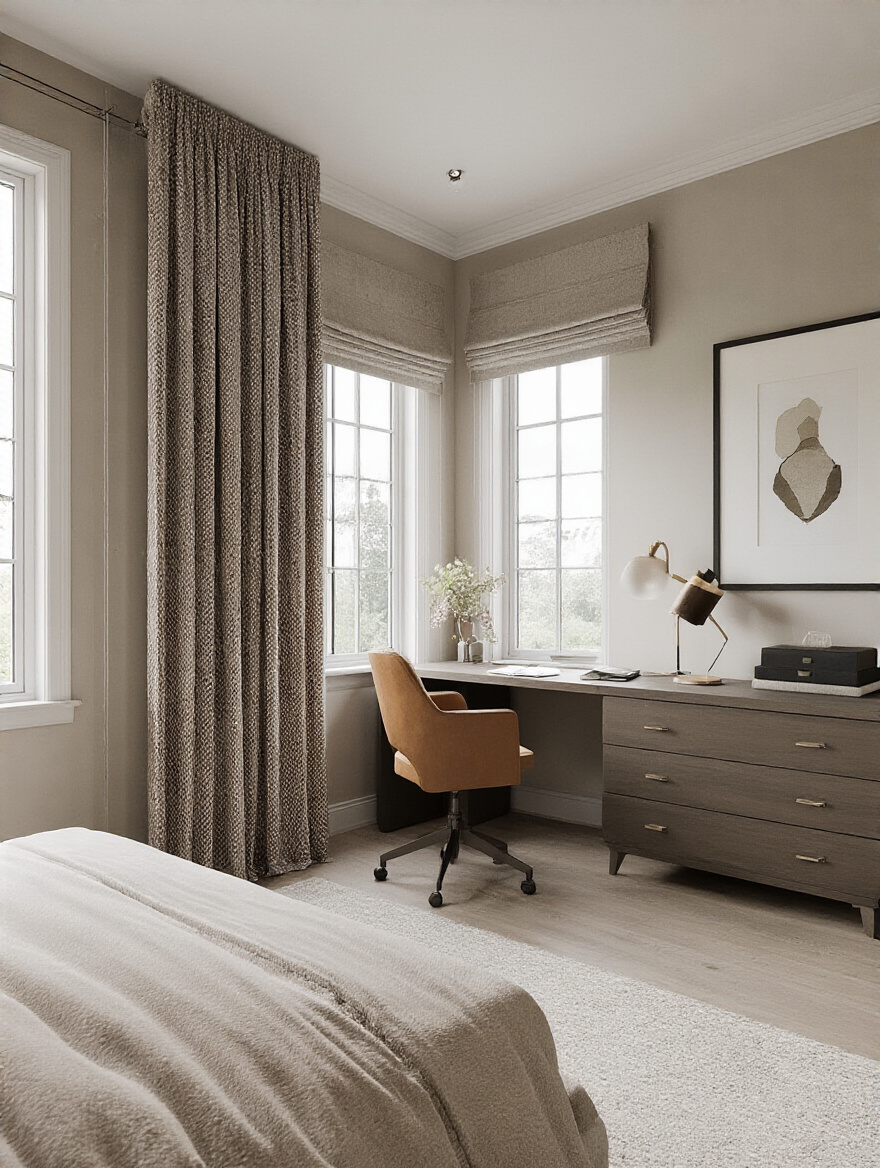
Choose pieces that serve dual purposes and complement your bedroom’s aesthetic. A sleek writing desk can double as a vanity with the addition of a mirror, while a vintage vanity table can serve as a workspace when needed. Consider the ergonomics of your chosen piece – proper height for comfortable use and adequate lighting for tasks.
- Ergonomic considerations: Ensure proper height for comfortable use
- Lighting needs: Position near natural light or add task lighting
- Storage integration: Look for pieces with built-in organization
- Style coordination: Choose finishes that complement existing furniture
A resident in a studio apartment installed a wall-mounted floating desk with integrated drawers, creating a stable workspace without consuming floor space. This solution maintained clear separation between work and rest areas while providing essential functionality in a compact environment.
11. Layer Lighting Fixtures to Enhance Ambiance and Function
As morning light filters through, the texture creates dynamic illumination that transforms your bedroom furniture design throughout the day. Layered lighting involves combining ambient, task, and accent lighting to create a versatile and beautiful lighting scheme that adapts to different activities and moods.
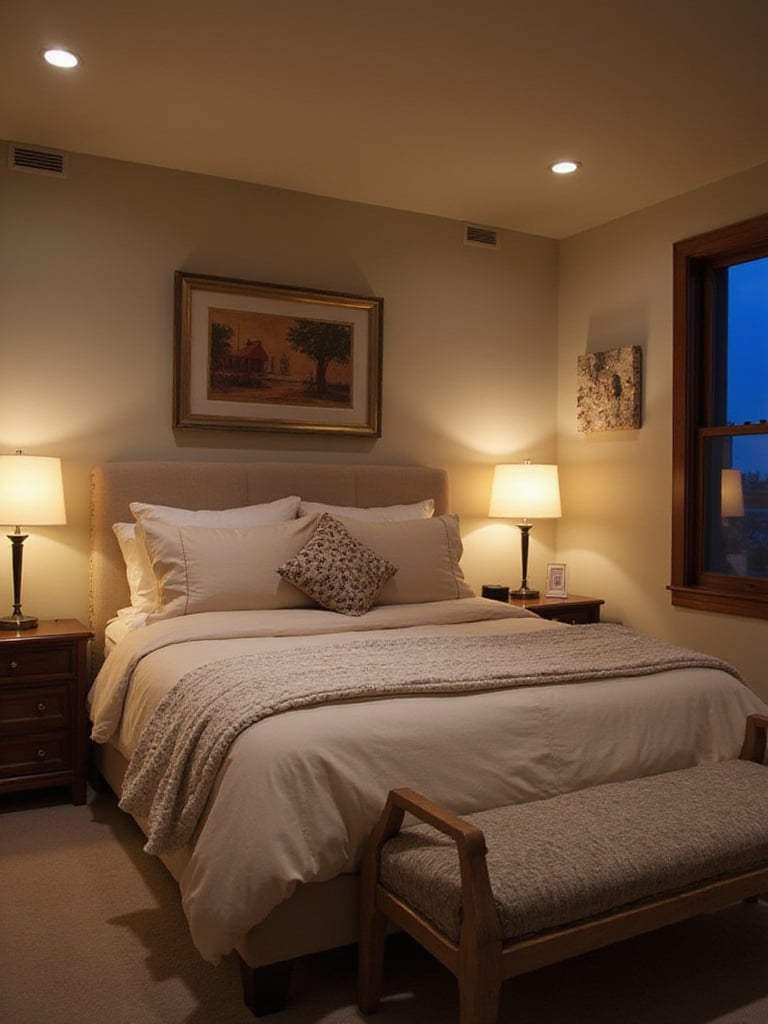
Proper bedroom lighting supports healthy circadian rhythms by providing bright, cool light for morning activities and warm, dim light for evening relaxation. Dimmable fixtures allow you to adjust light levels throughout the day, while multiple light sources eliminate harsh shadows and create visual depth.
A master bedroom featuring recessed LED ceiling lights for general illumination, elegant wall sconces flanking the bed for reading, and a small accent light highlighting artwork creates a sophisticated lighting scheme. Smart controls allow instant adjustment from bright morning light to soft evening ambiance with a single touch.
12. Define Zones with Area Rugs for Added Warmth
The finishing touch that elevates the entire look comes from strategically placed area rugs in bedroom furniture design. Rugs define functional zones, add crucial warmth and texture, and help anchor furniture groupings while improving the room’s acoustic properties.
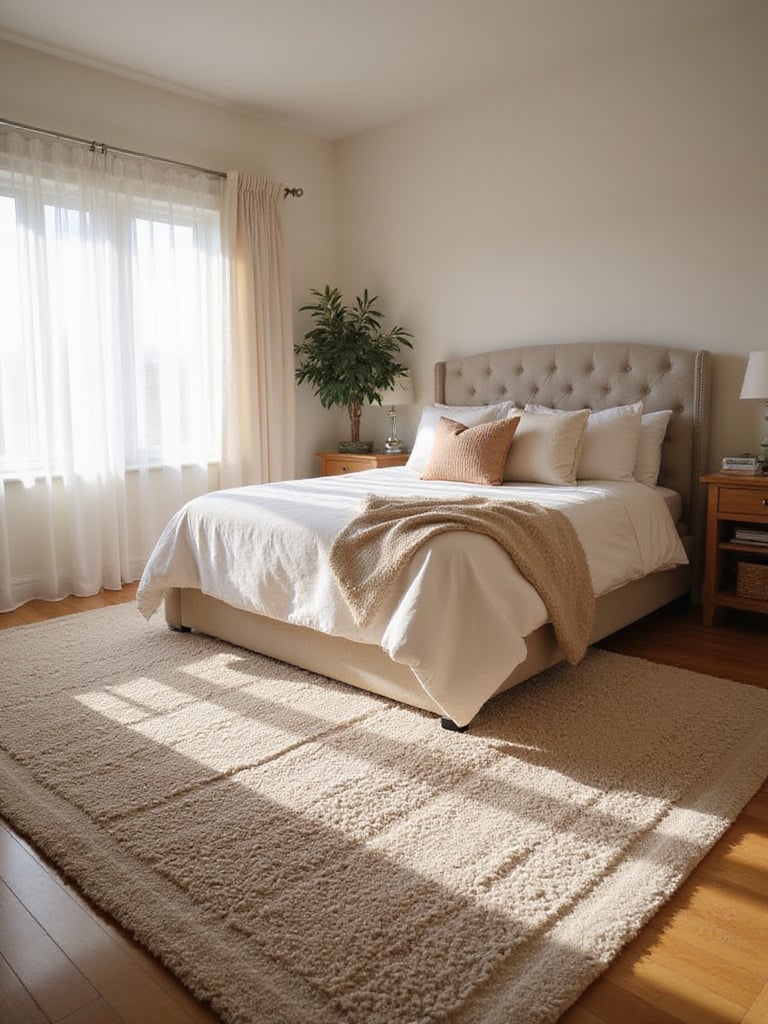
Choose rug sizes that properly anchor your furniture – for beds, the rug should extend at least 18-24 inches beyond the sides and foot. In seating areas, ensure all furniture legs can rest on the rug to create visual cohesion. Natural fiber rugs like wool provide durability and comfort, while synthetic options offer easy maintenance.
- Proper sizing: Rugs should anchor all furniture in a grouping
- Material selection: Consider durability, comfort, and maintenance needs
- Placement strategy: Ensure adequate extension beyond furniture edges
- Layering potential: Combine different textures for visual interest
A large 9×12 wool rug placed under a king-sized bed, extending well past the nightstands, visually anchored the sleeping area and made the expansive master bedroom feel more intimate and cohesive. The rug’s texture and warmth transformed the space from potentially cold to inviting.
13. Strategically Place Mirrors to Expand Perceived Space
The ambiance evolves throughout the day as natural light reflects and multiplies through carefully positioned mirrors in bedroom furniture design. Mirrors create the illusion of expanded space, increase natural light penetration, and add glamorous sparkle to your room’s overall aesthetic.
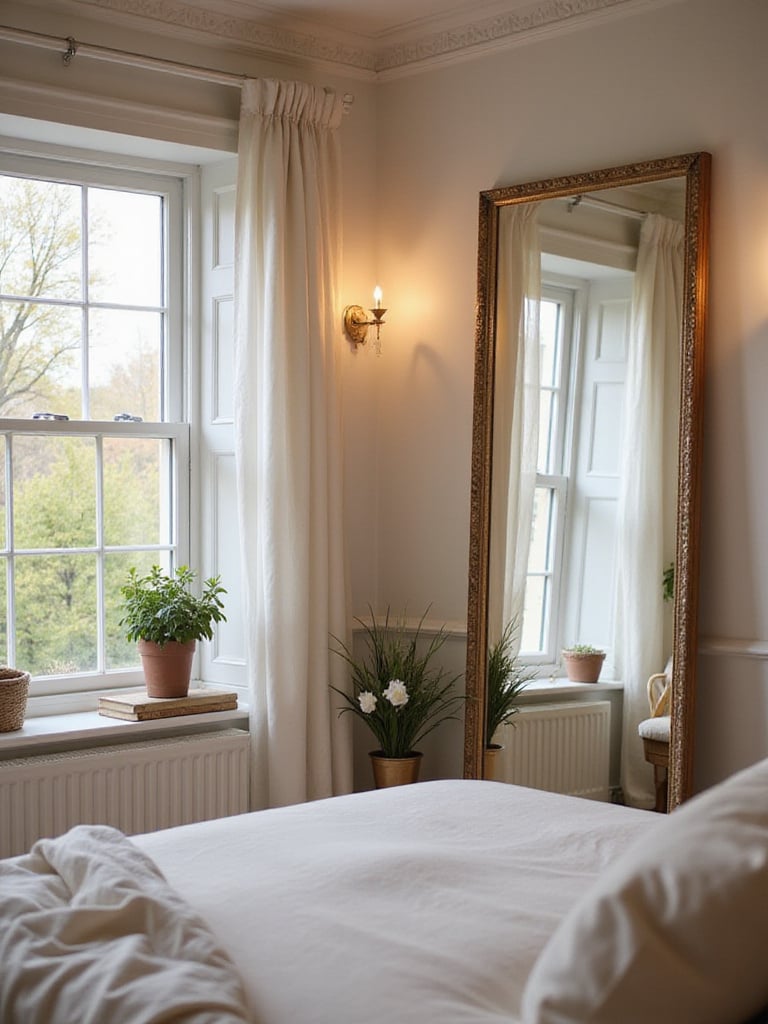
Position mirrors to reflect beautiful views, natural light sources, or attractive room features. A large mirror opposite a window can effectively double the amount of natural light in your room, while mirrored furniture pieces add subtle reflection without overwhelming the space. Avoid placing mirrors directly opposite the bed, as this can be disruptive to sleep.
In a compact urban apartment, a large floor-leaning mirror positioned adjacent to the window reflected both natural light and the city skyline view. This strategic placement made the small bedroom feel twice its actual size while bringing the dynamic outdoor scenery into the interior space, creating an expansive, bright sanctuary.
14. Add Biophilic Elements with Thoughtfully Placed Plants
The sustainable journey of this material involves connecting your bedroom furniture design to nature through carefully selected plants that thrive in bedroom conditions. Biophilic design elements improve air quality, reduce stress, and create a calming atmosphere that promotes better sleep and overall well-being.
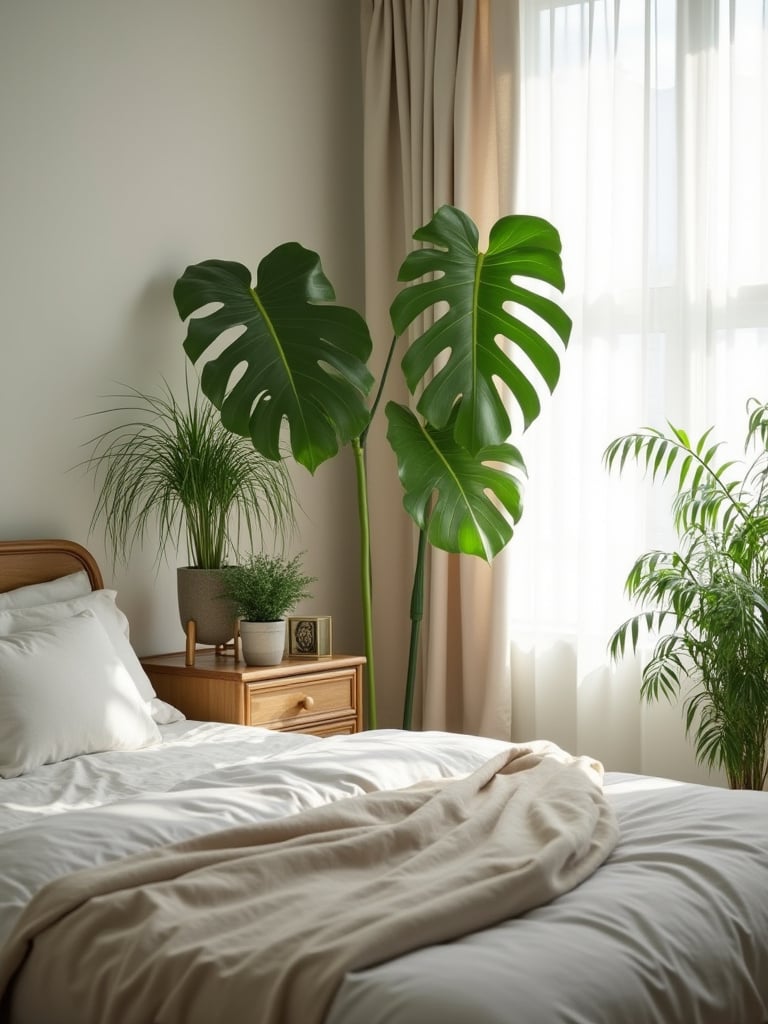
Choose low-maintenance, air-purifying plants that tolerate lower light conditions, such as snake plants, ZZ plants, or pothos. Consider the care requirements and your lifestyle – busy schedules call for more resilient plant varieties. Integrate plants at different heights and scales to create visual interest and natural rhythm.
- Bedroom-friendly plants: Snake plants, ZZ plants, peace lilies, pothos
- Light considerations: Match plant needs to your room’s natural light levels
- Maintenance requirements: Choose plants that fit your care capabilities
- Aesthetic integration: Select planters that complement your decor style
A minimalist bedroom featuring clean white walls and modern furniture was transformed by a large Monstera deliciosa in a sleek ceramic planter. The plant’s sculptural leaves added organic warmth and visual interest, softening the stark modern elements while improving the room’s air quality and creating a more inviting atmosphere.
15. Curate Wall Art and Decor for Personal Expression
The emotional response this evokes begins with selecting wall art and decor that reflects your personality and creates meaningful connections in your bedroom furniture design. Personal touches transform a generic space into a true sanctuary that tells your unique story and promotes emotional well-being.
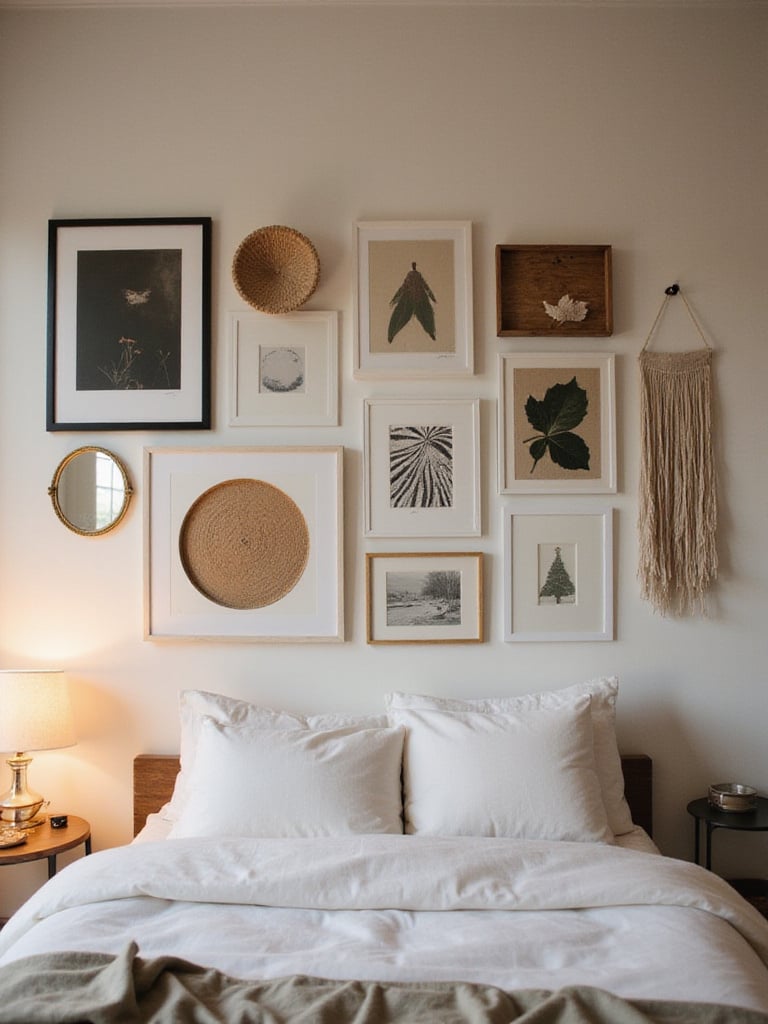
Mix different mediums and scales to create visual interest – combine framed prints with textile art, mirrors, and three-dimensional pieces. Consider the wall space available and plan arrangements that complement your furniture placement. Personal photographs, meaningful quotes, or artwork that resonates with your experiences create the strongest emotional connections.
A bohemian-style bedroom showcased a curated gallery wall featuring travel photographs, vintage botanical prints, a woven macrame hanging, and a decorative mirror. This eclectic collection created a vibrant narrative of the occupant’s adventures and interests, transforming the space into a deeply personal retreat that sparked joy and inspiration daily.
16. Ensure Furniture Scale and Proportion for Visual Balance
The unexpected environmental benefit comes from choosing appropriately scaled furniture that maximizes your bedroom furniture design efficiency while creating visual harmony. Proper scale and proportion prevent rooms from feeling cramped or sparse, directly impacting both functionality and aesthetic appeal.
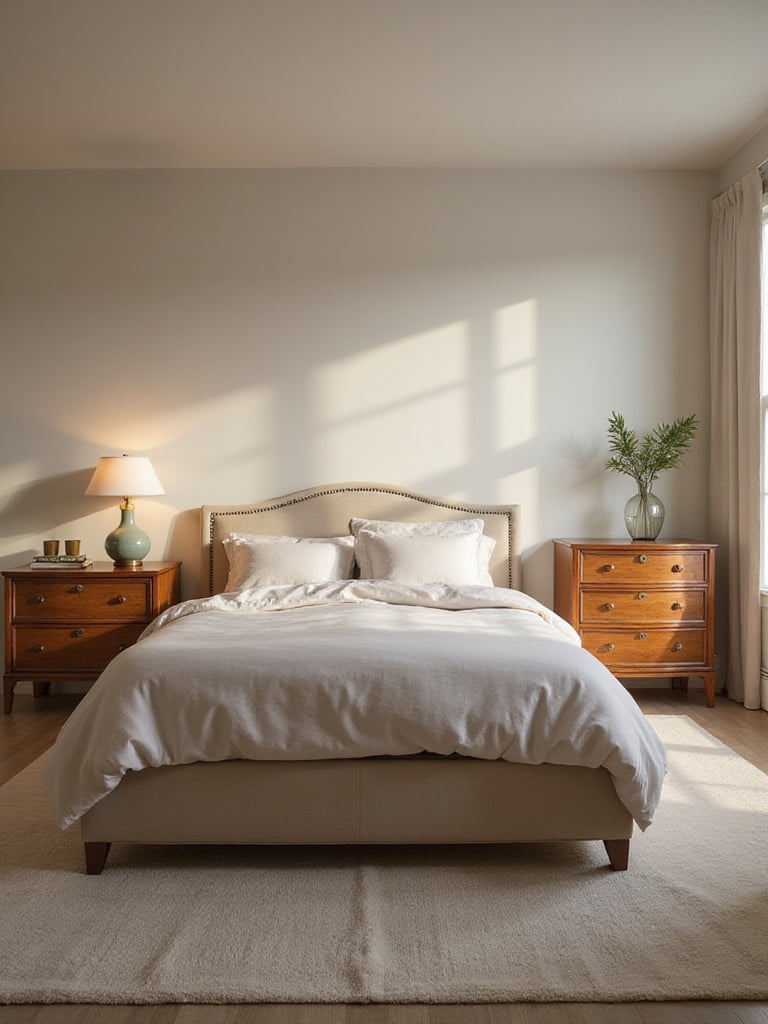
Furniture should be proportionate to your room size and to each other. A king-sized bed in a small room will overwhelm the space, while tiny nightstands beside a large bed create visual imbalance. Consider vertical proportions as well – tall headboards work well with high ceilings, while low-profile pieces suit rooms with standard ceiling heights.
- Room proportion guidelines: Bed should occupy 25-30% of floor space
- Furniture relationships: Nightstands should be proportionate to bed size
- Vertical considerations: Match furniture height to ceiling proportions
- Traffic flow: Maintain adequate clearance for comfortable movement
A 12×14 bedroom achieved perfect balance with a queen bed featuring a 60-inch tall headboard, paired with 24-inch wide nightstands and a low, wide dresser. Each piece felt appropriately sized for the space, creating visual harmony while maintaining functional clearances throughout the room.
17. Balance Visual Weight for a Harmonious and Calming Room
The quality becomes evident after years of use when you properly distribute visual weight throughout your bedroom furniture design. Visual weight refers to how heavy or light elements appear to the eye, influenced by factors like color, size, texture, and density.

Dark, solid pieces carry more visual weight than light, open-frame furniture. Distribute heavier pieces throughout the room to create balance – if you have a large, dark bed on one wall, balance it with substantial artwork, a sizeable dresser, or a collection of decor on the opposite side. Layer lighter elements to prevent any area from feeling too heavy or too sparse.
A master bedroom with a substantial dark wood bed was balanced by incorporating a light-colored area rug, an open-frame bookshelf, and a large piece of artwork with a bright background. This distribution created visual equilibrium, making the room feel harmonious and professionally designed rather than lopsided or overwhelming.
18. Choose Multi-Functional Pieces for Future Design Flexibility
The revival of this classic form comes with a twist toward maximizing utility in modern bedroom furniture design. Multi-functional pieces optimize space, reduce clutter, and provide flexibility as your needs evolve, making them essential for creating adaptable, efficient bedrooms.
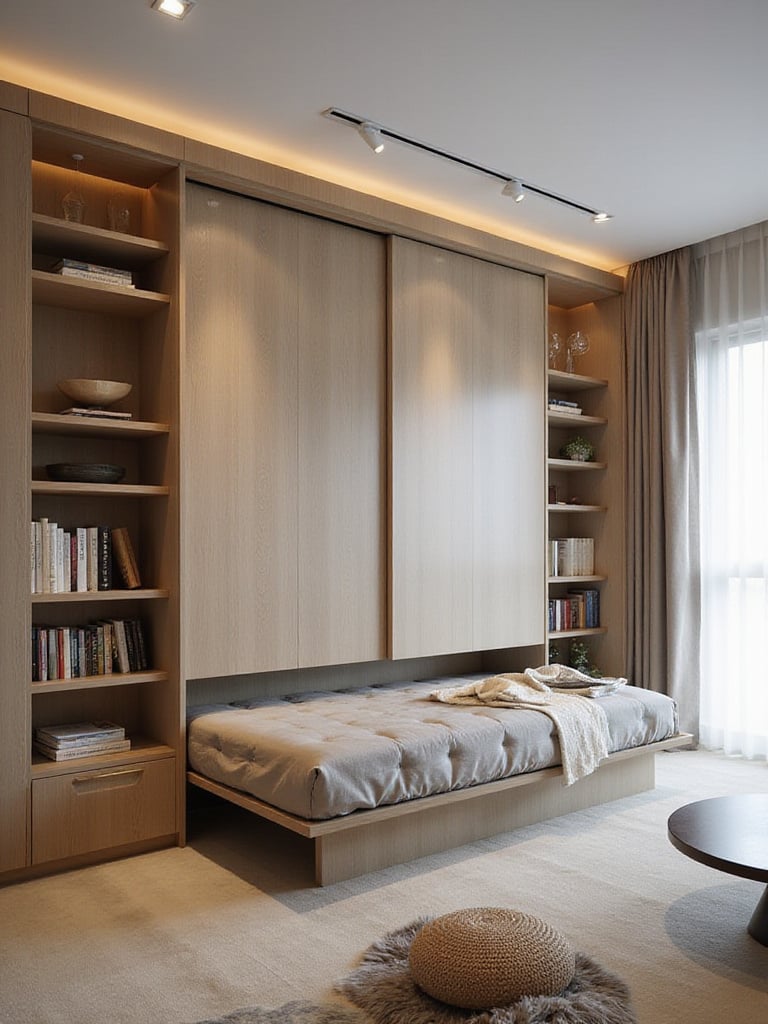
Look for furniture that serves multiple purposes: storage ottomans that provide seating, beds with built-in drawers, or nightstands with charging stations. These pieces reduce the total number of items needed while maintaining full functionality. Quality construction is crucial for multi-functional pieces, as they’ll experience more varied use than single-purpose items.
- Space optimization: Multi-functional pieces can increase usable space by 30%
- Budget efficiency: Reduce overall furniture costs by 15-25%
- Adaptability: Easily transition between different room functions
- Quality focus: Invest in well-built pieces with reliable mechanisms
A studio apartment resident integrated a Murphy bed that folded into a bookshelf unit, allowing the single room to function as both living area and bedroom. This innovative solution maximized the small space’s potential while maintaining style and comfort, proving that smart furniture choices can dramatically improve quality of life in compact living situations.
Conclusion
Creating a stunning bedroom through thoughtful furniture design is about more than aesthetics – it’s about crafting a space that supports your well-being, reflects your personality, and adapts to your evolving needs. These 18 essential tips provide a comprehensive roadmap for transforming any bedroom into a beautiful, functional sanctuary that promotes rest, productivity, and personal expression.
Remember that successful bedroom furniture design is a process, not a destination. Start with accurate measurements and a clear style vision, then build your space thoughtfully, considering how each element contributes to the overall harmony and functionality. Whether you’re working with a compact apartment bedroom or a spacious master suite, these principles will guide you toward creating a space that truly works for your lifestyle.
Your bedroom should be your personal retreat – a place where every element serves a purpose and brings you joy. Take these insights and begin creating the stunning, functional bedroom you deserve, one thoughtful choice at a time.

